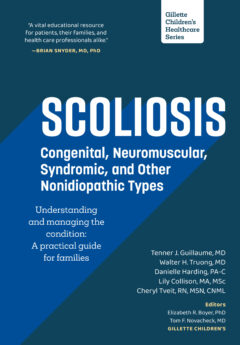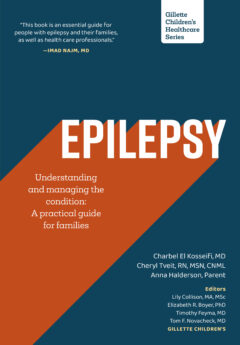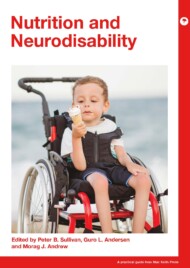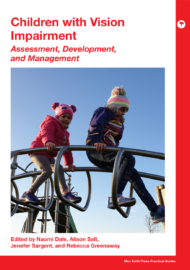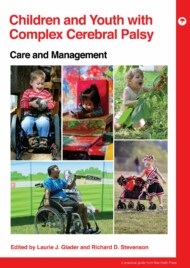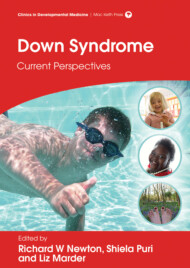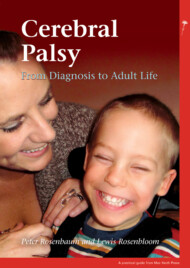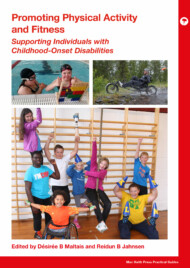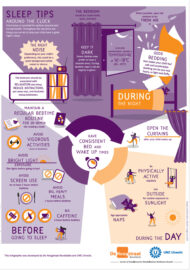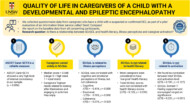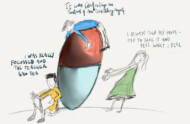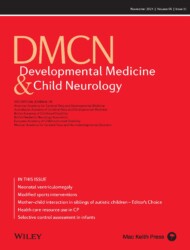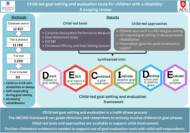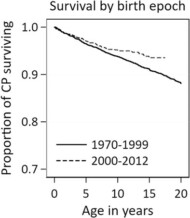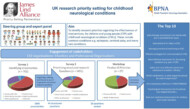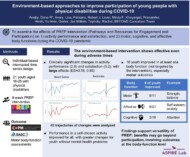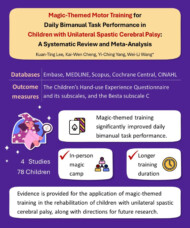Welcome
Start exploring here! We hope this will be a useful resource to help you find the information you need about cerebral palsy and other childhood-onset disabilities. We want to help you to find answers to your questions – so please let us know what else you would like us to cover. Here we are presenting videos, summaries, research information and other resources.
Read on for more
Ways we can help
1
Family-friendly Books
Discover our collection of family-friendly books featuring accessible, research-based insights. These titles include the perspectives of families and individuals with lived experience, offering valuable guidance while supporting parents on their journey.
2
Free Chapters
We have selected a range of chapters from our books, offering helpful insights and practical tips. Our chapters summaries highlight key points. View the full chapter to explore each topic in more depth.
3
The Knowledge Bank
Explore the answers to your questions here. Find out more about conditions, treatments, interventions, and all aspects of care. Follow signposts to find more in-depth, evidence-based information from Mac Keith Press content, as well as other great sources of knowledge.
4
Plain Language Summaries
Plain language summaries are an effective way of communicating scientific research to a wider audience. By presenting the key findings and significance of a study in easy-to-understand language, the content becomes more accessible to more people. Here we present summaries of papers published in Developmental Medicine & Child Neurology (DMCN).
5
Helpful Videos
Here you will find a collection of short videos from authors and editors summarising their work. They cover Developmental Medicine & Child Neurology (DMCN) articles, Mac Keith Press books and e-learning. The aim of the videos is to help viewers get a clear understanding of why the research is important, how it was carried out, and real-world implications.
Gillette Children’s Healthcare Series
The goal of the Gillette Children’s Healthcare Series is to empower families through a greater understanding of their condition and therefore help optimize outcomes for children, adolescents and adults living with these childhood-acquired and largely lifelong conditions.
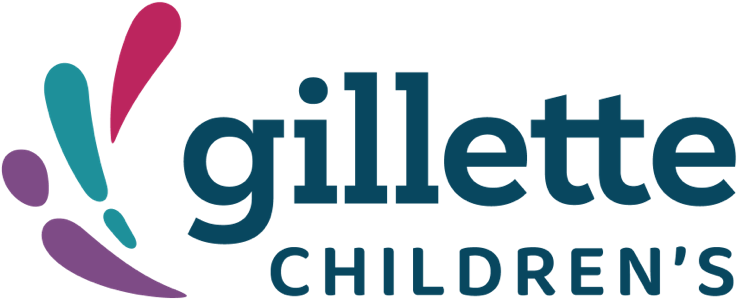
Free chapter downloads
The Knowledge Bank
Explore the answers to your questions here. Find out more about conditions, treatments, interventions, and all aspects of care. Follow signposts to find more in-depth, evidence-based information from Mac Keith Press content, as well as other great sources of knowledge.
How can we best prepare for the transition from pediatric to adult healthcare services in cerebral palsy care?
Health care transition is defined as the planned process and skill-building to empower adolescents and their families to navigate an adult model of health care. It is more than simply changing medical professionals (termed “transfer”).
How can we best prepare for the transition from pediatric to adult healthcare services in cerebral palsy care?
This answer is adapted from the Gillette Children’s Healthcare Series books on Cerebral Palsy (CP).
Health care transition is defined as the planned process and skill-building to empower adolescents and their families to navigate an adult model of health care. It is more than simply changing medical professionals (termed “transfer”).
Pediatric services for CP care are usually much better resourced than adult services and are better at following up with the individual. With adult services for CP care, it is usually up to the individual and family to do more proactive service procuring. Adult services are often much more reactionary rather than proactive.
Transition involves three steps: preparing, transferring, and integrating into adult services. That is, just because a file has been transferred does not mean the individual has successfully integrated into an adult service provider.
Helping children and adolescents with CP to become as independent as possible is the overall goal, which is why the focus on that transition must start early (from about the age of 12)—although supporting their independence really starts from birth. Transition doesn’t involve just health care; it also involves other areas such as education, finance, insurance coverage, and guardianship planning. It is very important that the individual with CP is involved.
- Purchase 'Spastic Hemiplegia–Unilateral Cerebral Palsy'
- Preview full content of 'Spastic Hemiplegia–Unilateral Cerebral Palsy' via Flipbook.
- Purchase 'Spastic Diplegia–Bilateral Cerebral Palsy 2nd Edition'
- Preview full content of 'Spastic Diplegia–Bilateral Cerebral Palsy 2nd Edition' via Flipbook.
- Purchase 'Spastic Quadriplegia–Bilateral Cerebral Palsy'
- Preview full content of 'Spastic Quadriplegia–Bilateral Cerebral Palsy' via Flipbook.
What is craniosynostosis?
Craniosynostosis is a condition in which one or more of the fibrous joints (sutures) between the bones of a baby’s skull close prematurely.
What is craniosynostosis?
This answer is adapted from the Gillette Children’s Healthcare Series book on Craniosynostosis.
Craniosynostosis is a condition in which one or more of the fibrous joints (sutures) between the bones of a baby’s skull close prematurely, before the brain has finished growing. This early fusion affects the shape of the head and the face which can impact brain growth. The condition requires surgical intervention.
What are the different types of craniosynostosis?
There are multiple classifications of CS. Generally, it is classified based on the cause of the condition, the number of sutures involved, and the sutures that fused prematurely, resulting in a specific head shape.
What are the different types of craniosynostosis?
There are multiple classifications of CS. Generally, it is classified based on the cause of the condition, the number of sutures involved, and the sutures that fused prematurely, resulting in a specific head shape.
This answer is adapted from the Gillette Children’s Healthcare Series book on Craniosynostosis.
Classification by cause
- Nonsyndromic CS: CS that is not associated with a syndrome but is instead its own medical condition that has no known cause. Nonsyndromic CS accounts for about 85% of cases and most are single-suture fusions.
- Syndromic CS: Occurs as part of a genetic syndrome (e.g., Apert, Crouzon, Pfeiffer syndromes). Syndromic CS accounts for about 15% of cases, usually involves multiple sutures and is more complex to treat.
Classification by the number of Sutures Involved
- Single-suture CS: Only one suture fuses prematurely.
- Multisuture CS: More than one suture is fused; commonly syndromic and more severe.
Classification by which suture fused (head shape patterns)
- Sagittal CS (Scaphocephaly): Sagittal suture fuses causing a long, narrow, boat-shaped head.
- Metopic CS (Trigonocephaly): Metopic suture fuses. Creating a triangular forehead, closely spaced eyes.
- Unicoronal CS (Anterior Plagiocephaly): One coronal suture fuses making the forehead asymmetrical with one side flat (eye and nose may shift).
- Bicoronal CS (Brachycephaly): Both coronal sutures fuse creating a short, wide head with tall/flat forehead.
- Lambdoid CS (Posterior Plagiocephaly): One lambdoid suture fuses leading to flattening at the back of the head on one side.
How is craniosynostosis diagnosed?
Craniosynostosis may be suspected when an infant presents with an atypical head shape, usually noticed shortly after birth by parents, family members, or medical professionals familiar with the condition.
How is craniosynostosis diagnosed?
This answer is adapted from section 1.5 of the Gillette Children’s Healthcare Series book on Craniosynostosis.
Craniosynostosis may be suspected when an infant presents with an atypical head shape, usually noticed shortly after birth by parents, family members, or medical professionals familiar with the condition. In rare cases, particularly with syndromic forms, it may be identified before birth by ultrasound, although prenatal diagnosis is uncommon. When craniosynostosis is suspected, the child is referred to a pediatric craniofacial surgeon within a specialized hospital, where diagnosis and management are carried out by a multidisciplinary craniofacial team, often in partnership with a neurosurgeon.
Diagnosis begins with a detailed medical and family history, including information about pregnancy, maternal health or medication use, family history of craniosynostosis, and any feeding or breathing difficulties after birth, which are more typical in syndromic cases. Head growth patterns are also reviewed to identify growth that is unusually fast or slow. This is followed by a thorough physical examination. Clinicians assess facial symmetry, palpate sutures for ridging or flatness, and examine the fontanels for abnormal shape or persistent bulging or sinking. Eye movements and reflexes are checked, with referral to an ophthalmologist recommended for all infants with craniosynostosis. Head circumference is measured and compared with World Health Organization growth charts, though normal circumference does not rule out the condition due to compensatory skull growth. A more accurate indicator is the cranial index, which compares the width and length of the skull. Neurological exams may also be performed if there are concerns about reflexes, movement, or sensation.
If clinical suspicion remains high, imaging is ordered to confirm the diagnosis. Computed tomography (CT) is the most commonly used and reliable imaging technique, providing detailed images of fused sutures and allowing for three-dimensional reconstructions. X-rays can also visualize bone structures but are less comprehensive. Magnetic resonance imaging (MRI) may be used to assess brain tissue and development, offering the advantage of no radiation exposure, though it often requires sedation and is less effective for bone evaluation. Ultrasound, which uses sound waves instead of radiation, may also be used in certain cases to examine sutures.
Submit a question
Let us know what other questions you have. Are there specific topics you would you like us to cover?
Contact us now using the form.
Plain Language Summaries
Plain language summaries are an effective way of communicating scientific research to a wider audience. By presenting the key findings and significance of a study in easy-to-understand language, the content becomes more accessible to individuals with disabilities, parents, caregivers, and others. Here we present summaries of papers published in Developmental Medicine & Child Neurology (DMCN).
Helpful videos
Here you will find a collection of short videos from authors and editors summarising their work. They cover Developmental Medicine & Child Neurology (DMCN) articles, Mac Keith Press books and e-learning. The aim of the videos is to help viewers get a clear understanding of why the research is important, how it was carried out, and real-world implications.
UK research priority setting for childhood neurological conditions| Jill Cadwgan & Rhys Inward |DMCN
Contact us
Please feel free to contact us if you have any feedback or suggestions:
